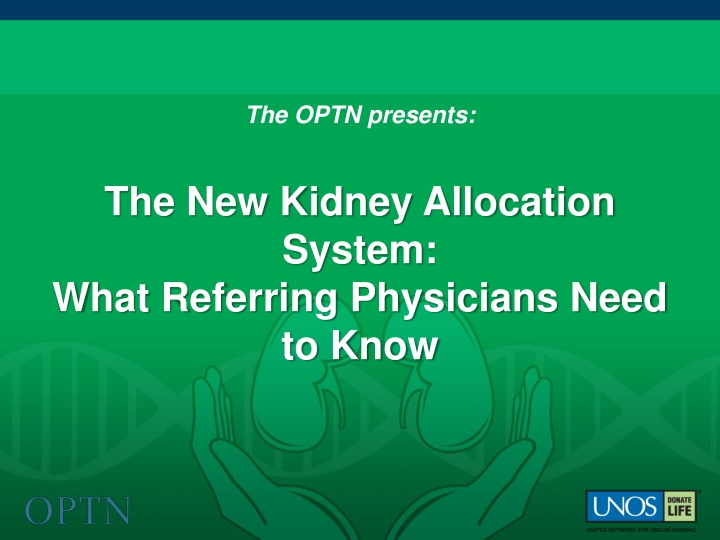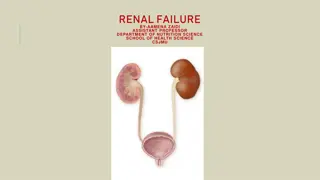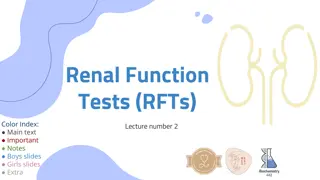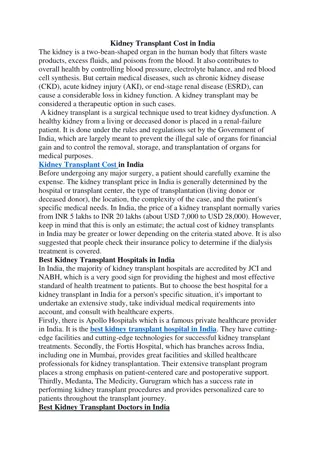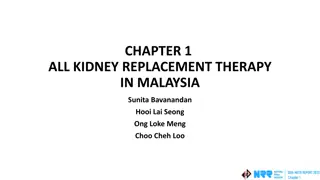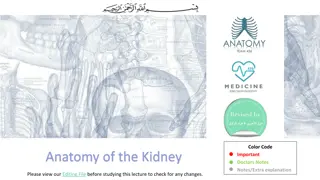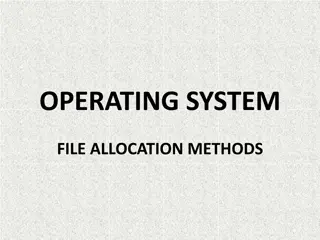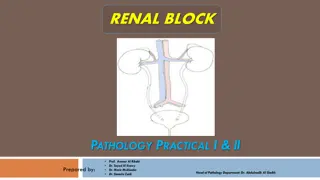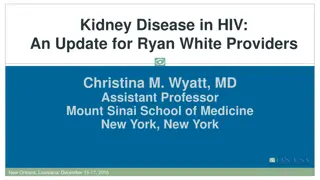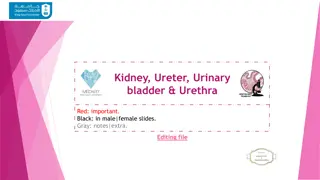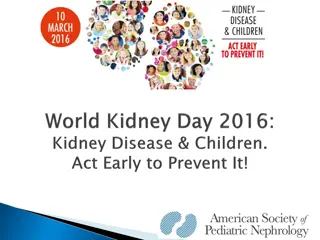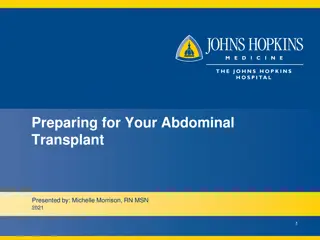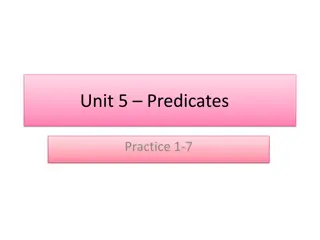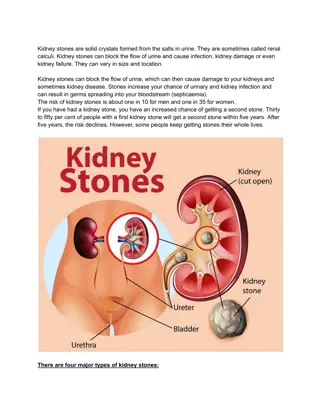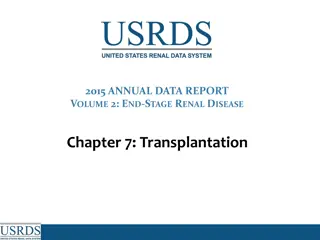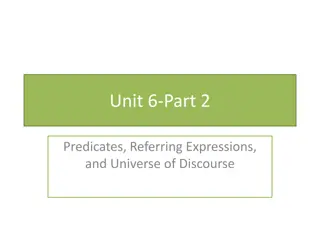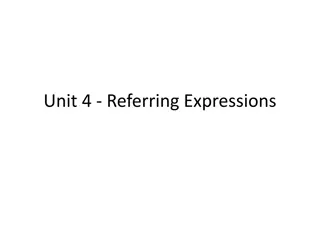The New Kidney Allocation System: What Referring Physicians Need to Know
This article discusses the OPTN's updated kidney allocation system and provides crucial information for referring physicians involved in the kidney transplant process.
Download Presentation

Please find below an Image/Link to download the presentation.
The content on the website is provided AS IS for your information and personal use only. It may not be sold, licensed, or shared on other websites without obtaining consent from the author.If you encounter any issues during the download, it is possible that the publisher has removed the file from their server.
You are allowed to download the files provided on this website for personal or commercial use, subject to the condition that they are used lawfully. All files are the property of their respective owners.
The content on the website is provided AS IS for your information and personal use only. It may not be sold, licensed, or shared on other websites without obtaining consent from the author.
E N D
Presentation Transcript
The OPTN presents: The New Kidney Allocation System: What Referring Physicians Need to Know
Objectives Explain the new kidney allocation policy and its goals Summarize basic changes in allocation components for deceased donor kidneys Describe patient indicators appropriate for transplant evaluation referral List resources for additional information including education of patients
Richard Formica, Jr., MD Associate Professor of Medicine & Surgery Yale University School of Medicine
Why change kidney allocation? Current Limitations o High kidney discard rates o Variability in access to transplant o Unrealized graft years o Unnecessarily high re-transplant rates
Predicted outcomes of the change Approximately 8,000 additional life years gained annually Improved access for: o highly sensitized candidates o ethnic minority candidates Comparable levels of kidney transplants at regional/national levels
Major allocation components Replace SCD/ECD with KDPI Incorporate A2/A2B to B Add longevity matching Base pediatric priority on KDPI Increase priority for sensitized candidates/CPRA sliding scale Remove payback system Include pre-registration dialysis time Remove variances
Implementation Phase I Phase II Data updates required New reports released Calculators made available New allocation rules applied Variances turned off Payback system turned off Anticipated mid 2014 Anticipated end 2014
Importance of early referral Identify issues that may complicate /prevent transplant Sensitized candidates receive additional priority Waiting time accumulates while issues are addressed Receive 0-ABDR mismatch offers Slowly progressive renal diseases could receive pre- emptive transplant Accrue Waiting Time with GFR <=20ml/min Pre-emptive listing
Revised waiting time calculation Waiting time begins at/after registration with GFR <=20 ml/min OR On Dialysis Current Waiting time points awarded for dialysis prior to registration (pediatric and adults) Recognizes time spent with ESRD as basis for priority New Waiting time points based on GFR remains the same Reminder
Sequence A Sequence B Sequence C Sequence D Highly Sensitized 0-ABDRmm (top 20% EPTS) Prior living donor Local pediatrics Local top 20% EPTS 0-ABDRmm (all) Local (all) Regional pediatrics Regional (top 20%) Regional (all) National pediatrics National (top 20%) National (all) Highly Sensitized 0-ABDRmm Prior living donor Local pediatrics Local adults Regional pediatrics Regional adults National pediatrics National adults Highly Sensitized 0-ABDRmm Prior living donor Local Regional National Highly Sensitized 0-ABDRmm Local + Regional National 0-ABDR Mismatch Priority
Sensitized candidates CPRA >=80% receive 4 additional points and zero points for moderately sensitized candidates Current Points assigned based on a sliding scale starting at CPRA>=20% New
Point changes: Sensitization CPRA Sliding Scale (Allocation Points) (CPRA<98%) 20 17.30 18 New 16 14 12.17 12 Points 10.82 10 8 Current 6.71 6 4.05 4 0.811.091.582.46 2 0.48 0.34 0 0 0.21 0.08 0 0 0 10 20 30 40 50 60 70 80 90 100 CPRA
Sequence A Sequence B Sequence C Sequence D Highly Sensitized 0-ABDRmm (top 20% EPTS) Prior living donor Local pediatrics Local top 20% EPTS 0-ABDRmm (all) Local (all) Regional pediatrics Regional (top 20%) Regional (all) National pediatrics National (top 20%) National (all) Highly Sensitized 0-ABDRmm Prior living donor Local pediatrics Local adults Regional pediatrics Regional adults National pediatrics National adults Highly Sensitized 0-ABDRmm Prior living donor Local Regional National Highly Sensitized 0-ABDRmm Local + Regional National New categories for highly sensitized candidates
Meelie DebRoy, MD Associate Professor of Surgery Rutgers Robert Wood Johnson Medical School
Early referral There is no established system to ensure that medically appropriate candidates are referred for transplantation
Guidance on early referral Patients with chronic kidney disease (Stage 3 or higher) or ESRD should be referred for transplant evaluation
Guidance on early referral Pre-emptive transplant and timely, early referral is the goal o GFR range = 25-30 Education about transplant must begin before ESRD to be most effective o Stage 3-4 CKD Begin discussing the importance of living donors Initiate weight loss and smoking cessation counseling as necessary
Kidney Allocation System Communication, Education, and Resources
Resources for professionals Kidney Allocation Toolkit FAQs Sample messaging for discussing changes with patients Patient brochure Guidance for early referral considerations Subscribe to RSS feeds and a monthly newsletter http://transplantpro.org/kidney-allocation-system/
More information OPTN web site - http://optn.transplant.hrsa.gov UNOS web site* - http://www.unos.org Transplant Living* - http://www.transplantliving.org Transplant Pro* - http://transplantpro.org *These are a service of United Network for Organ Sharing and are not produced under the OPTN contract.
